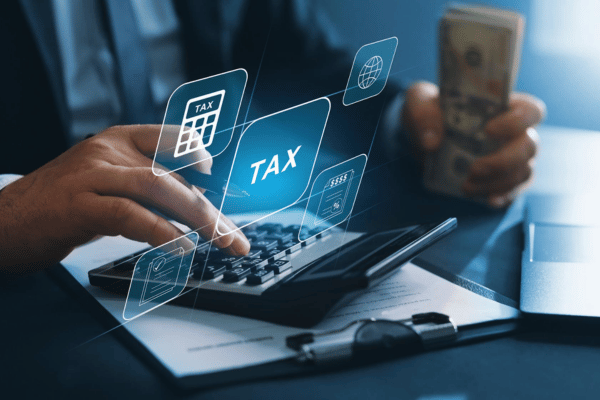Louisiana R&D Tax Credit: Eligibility & Application Guide

What is the Louisiana R&D Tax Credit, and how can businesses primarily engaged in innovation take advantage of this tax claim? We’ll explore the basics companies need to know to maximize this credit. It’ll delve into the benefits they can get from claiming this tax benefit and provide insight on how to claim it.
What are Louisiana R&D Tax Credits?
The Louisiana State Legislature provides a tax credit for companies that have paid or incurred qualified research expenses while conducting qualified research in Louisiana. This credit offers up to a 30% tax credit on qualified research expenditures incurred in Louisiana—with no cap or minimum requirement. Moreover, it lowers a company’s income or franchise tax.
Does Louisiana have an R&D credit?

Louisiana provides up to a 30% tax credit on qualified expenditures incurred in Louisiana, with no cap or minimum requirement.
Eligibility Criteria for Louisiana Businesses
The tax credit incentive is available to companies that have incurred research and development expenditures in Louisiana and meet certain requirements. It should be highlighted that only research and development conducted in Louisiana will qualify for the Tax Credit Incentive. For the credit to be rewarded, a taxpayer must claim the expenditures within one year after December 31 of the year the expenditure was incurred.
Not all types of businesses are eligible for this tax credit. Professional services firms that do not have a pending or issued United States patent related to the qualified research expenditures claimed aren’t allowed to claim this tax credit. Businesses primarily engaged in custom manufacturing and custom fabricating that do not have a pending or issued United States patent related to the qualified research expenditures claimed are also ineligible. These ineligible businesses can only file for the credit if invited by the Secretary of LED.
Four-Part Test for Qualifying Activities
Companies that intend to file for an R&D tax credit in Louisiana should consider this four-part test before declaring activities in their tax claim. This is a helpful guide to fast-track the filing process.
Technological in Nature
To qualify for research credits, the activity should fundamentally rely on principles of physical sciences, biological sciences, computer science, or engineering and scientific methods. This requires the use of technology or engineering in a field of science.
Moreover, it aims to develop or improve a product, process, or software’s functionality, performance, reliability, or quality. Examples include developing new materials, improving manufacturing processes, or enhancing software functionality.
Permitted Purposes
The activity must relate to a new or improved business component’s function, performance, reliability, quality, or composition. It should intend to develop a new or improved product, process, or software. Moreover, it ensures that the research is not conducted for non-commercial purposes, such as social science or arts-related endeavors.
Elimination of Uncertainty
The activity must be intended to discover information to eliminate uncertainty concerning a particular method or capability for developing or improving a product or process. Uncertainty exists if the capability, method, or design of the product, process, or software is uncertain or not readily known.
Process of Experimentation
The activity must constitute the process of experimentation involving simulation, evaluation of alternatives, confirmation of hypotheses through trial and error, testing and modeling, or refining or discarding of hypotheses. It should involve a systematic process designed to evaluate one or more alternatives and include testing hypotheses, modeling, prototyping, and iterative analysis. It also needs to identify uncertainties and test potential solutions to resolve them.
Carrying Forward & Transferring the Louisiana R&D Tax Credit
The tax credit was fully refundable from 2009 through June 30, 2015. Credits over the tax liability are refundable when claimed on an original return filed after June 30, 2015, and have a carryforward of five (5) years.
The primary credits are not transferable. However, beginning with the 2018 tax year, the additional credits for SBIR and SBTT grants may be transferred or sold to another Louisiana taxpayer. Credits claimed before 2009 that cannot be utilized may be carried forward, transferred, or sold.
Qualifying Louisiana Research Expenditures
Companies should note the only qualified research expenses for the Louisiana Research and Development tax credit program. Generally, the R&D tax credit covers two categories of qualified research expenses: in-house and contract research expenses. In-house research expenses include wages paid to employees for any qualifying activities performed, supplies purchased to conduct qualified research, and contract research expenses paid to conduct qualified research.
To clarify, only wages, including all taxable wages reported on an employee’s W-2 Form, can be declared qualifying research expenditures. In addition, it should be highlighted that only employees involved in qualified research activities or directly supporting these initiatives are qualified.
Any tangible property bought to conduct qualified research can be considered a supply for this tax credit. For example, a Louisiana firm working to improve a product’s quality may declare the materials used for that project as supply expenses.
Contract research expenses are when a business performs qualified research on behalf of the taxpayer. In this case, 65% of the amount paid to the non-employee can be considered a qualified expense.
How to Claim Louisiana R&D Tax Credits

Companies must file IRS Form 6765, Credit for Increasing Research Activities, for this tax benefit. This process includes identifying qualifying research activities and providing documentation proving these costs meet the Internal Revenue Code Section 41 requirements. Companies may use business records, financial records, oral testimonies, and technical documents.
Before you complete this Form, you should familiarize yourself with the instructions mandated by the IRS. The PDF version of this Form can be easily downloaded from the IRS website.
In general, the IRS Form 6765 has four sections:
- Section A is used to claim the regular credit and contains 11 lines of required information.
- Section B applies to the Alternative Simplified Credit or ASC.
- Section C identifies additional forms and schedules that require reporting based on one’s business structure.
- Section D only applies to qualified small businesses or QSBs making a payroll tax election.
The IRS recommends that companies calculate their credit using both regular and simplified credit methods, and then they fill out the section (A or B) that would result in the greatest tax benefit.
Calculating the Louisiana R&D Tax Credits

The Louisiana R&D Credit is claimed by filing the Tax Credit Application and filing fee with the LA Department of Economic Development (LED). The Application must be submitted within one year after December 31, the year after when the QREs were incurred. The credit calculation would depend on the application type:
- 30% for companies that employ up to 50 Louisiana residents. The base period is 50% of the average of QREs in the three preceding tax years.
- 10 % for companies that employ 50-99 employees. This is defined as 80% of the average of QREs in the three preceding tax years.
- 5 % for companies with 100 or more employees. This is defined as 80% of the average of QREs in the three preceding tax years.
Maximizing the Benefits of the Louisiana R&D Tax Credit
Companies that intend to make the most of this tax claim as they would with corporate income tax savings should do the following:
- Identify all qualifying expenses: Companies should determine the average qualified research expenses to declare in their Application.
- Maintain all the expense documentation: Companies are required to present documentation that the activities lead to economic development.
- Choose the most beneficial tax credit for your business: Companies should determine which tax claim benefits them most.
Next Steps
If a company intends to maximize the Research and Development Tax Credit in Louisiana, it should consult with tax experts in a designated Louisiana department. The state has some differences from the federal research credit, and knowing the difference can spare them a lot of time and resources. Contact us and get in touch with specialized R&D tax credit experts.
FAQs
Does Louisiana have a state tax credit?
Yes, Louisiana has an R&D tax credit program.
What industries qualify for the R&D tax credit?
The tax credit is open to all industries as long as they pass the four-part test for qualifying activities.